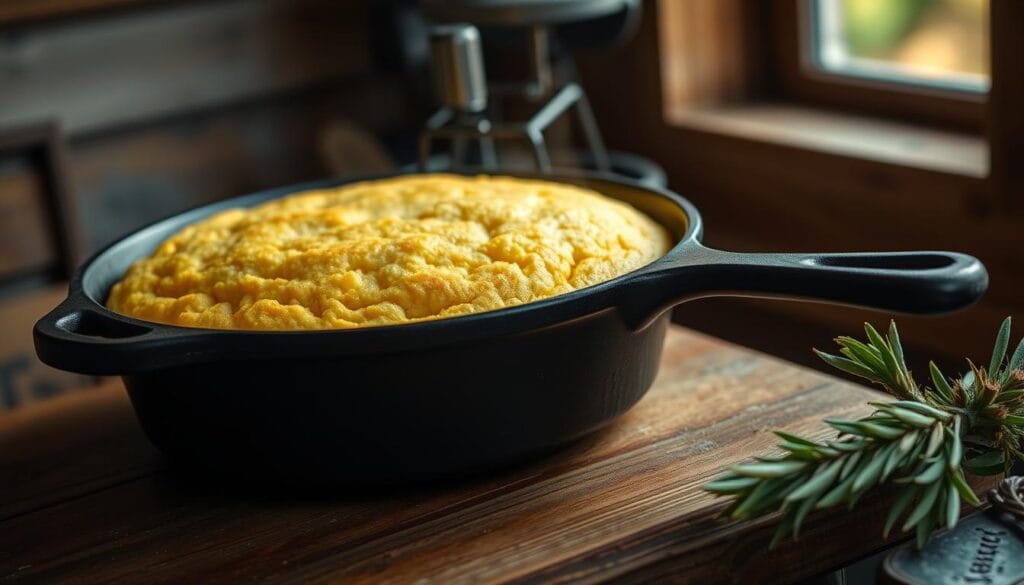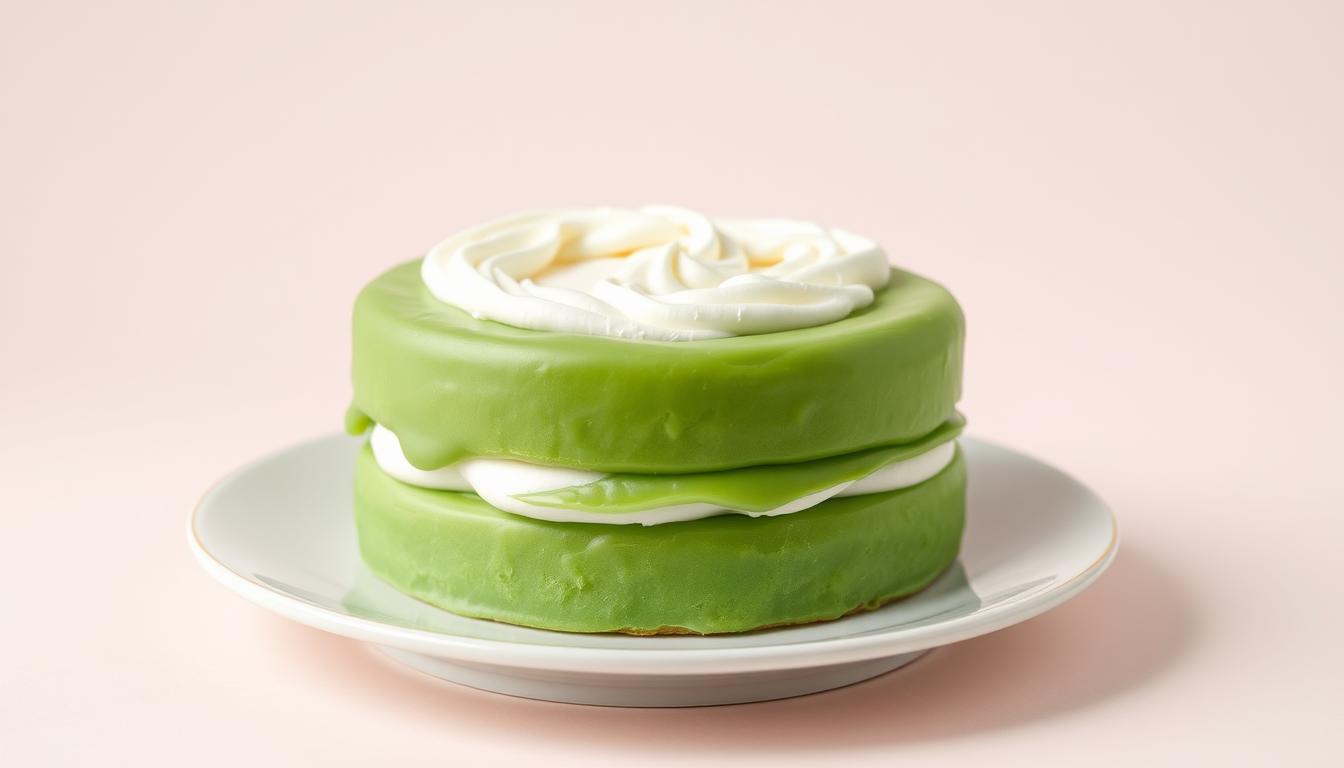These golden bites rely solely on cornmeal for their base, creating a texture that’s fluffy inside with a delicate crust. You’ll need just a handful of pantry staples—no fancy equipment required. A cast iron skillet works beautifully, but a muffin tin or baking pan delivers equally delicious results. Perfect for busy weeknights or weekend gatherings.
Pair them with chili, soups, or smoky BBQ for a hearty meal. Drizzle honey for sweetness or add herbs for savory flair. The choice is yours—versatility is baked right in. And because they’re gluten-free, everyone at the table can enjoy that first warm bite.
Prep Time: 10 mins
Cook Time: 15–22 mins (depending on pan)
Total Time: 25–30 mins
Servings: 6–8 muffins
Ingredients
- Dry Ingredients
- 1 cup medium-grind cornmeal
- ½ teaspoon baking soda
- 1 teaspoon baking powder
- ½ teaspoon salt
- Wet Ingredients
- 1 cup yogurt (dairy or plant-based)
- 2 large eggs (or 2 chia/flax eggs for egg-free)
- 3 tablespoons melted butter or ghee (or plant-based oil for dairy-free)
- 1–2 tablespoons honey (optional, adjust for sweetness)
- Optional Add-ins
- ½ cup shredded zucchini (squeeze excess moisture)
- Herbs, shredded cheese, or jalapeños to taste
Equipment
- Cast iron skillet, muffin tin, or standard baking pan
- Mixing bowls (wide for gentle folding)
- Measuring cups and spoons
- Toothpick or cake tester
- Oven thermometer (optional but recommended)
Directions
Step 1: Preheat & Prep Pan
- Preheat oven to 400°F (204°C).
- Grease skillet, baking pan, or muffin tin with butter or oil. For skillet, preheat in the oven for 5 minutes to enhance crust.
Step 2: Mix Dry Ingredients
- Sift cornmeal into a large bowl.
- Add baking powder, baking soda, and salt. Whisk 30 seconds for even distribution.
Step 3: Mix Wet Ingredients
- In a separate bowl, whisk yogurt, eggs, melted butter, and honey.
- Fold in optional zucchini or other mix-ins gently.
Step 4: Combine Wet and Dry
- Pour wet mixture into dry ingredients.
- Fold gently with a silicone spatula 10–12 strokes. Small lumps are fine—avoid overmixing.
Step 5: Bake
- Cast Iron Skillet: 18–20 mins (crispy edges, tender interior)
- Muffin Tin: 15–17 mins (soft, portable muffins)
- Ceramic/Standard Pan: 20–22 mins (even crumb, moist center)
Check doneness with a toothpick—it should come out with moist crumbs, not wet batter.
Step 6: Cool & Serve
- Let muffins rest 5–10 minutes before serving.
- Optional: Brush tops with melted butter for extra richness.
Tips for Perfect Muffins
- Avoid overmixing to keep texture light and airy.
- Ensure baking soda/powder are fresh for proper rise.
- Preheat pans for crispy crusts, especially cast iron.
- Adjust mix-ins in small amounts (¼ cup) to maintain structure.
Serving Suggestions
- Savory: Chili, soups, BBQ dishes, roasted vegetables
- Sweet: Honey, maple syrup, poached eggs, avocado slices
- Portion Control: Muffin tins create individual servings; skillet yields rustic loaf-style cornbread
Storage
- Room Temp: Airtight container, 2 days
- Refrigerator: Up to 5 days
- Freezer: Wrap individually in foil, store in freezer bag, up to 3 months
- Reheat: Cast iron 350°F 5 mins; microwave with a teaspoon of water to prevent dryness
Nutritional Info (per muffin)
- Calories: 180–200
- Fat: 7g
- Carbs: 25g
- Fiber: 2g
- Sugar: 5g
Variations
- Dairy-Free: Replace yogurt with coconut or plant-based alternatives; butter with oil
- Egg-Free: Use chia or flax eggs (1 tbsp seeds + 3 tbsp water per egg, set 5 mins)
- Veggie Boost: Add shredded zucchini, carrots, or spinach (squeeze excess moisture)
- Flavor Twist: Herbs, jalapeños, or shredded cheese for savory muffins; honey or maple for sweet

Baking Methods for Optimal Texture
Your choice of pan changes the game. A preheated cast iron skillet creates explosive rise and crackly edges, while muffin tins yield portable domes with softer crusts. Adjust times based on vessel depth:
| Pan Type | Bake Time | Texture |
|---|---|---|
| Cast Iron | 18-20 mins | Crispy base |
| Muffin Tin | 15-17 mins | Uniform crumb |
| Ceramic Dish | 22 mins | Moist center |
FAQ
Can I use a regular baking pan if I don’t own a cast iron skillet?
Why does this recipe use baking soda instead of baking powder?
How do I prevent the batter from becoming dense?
Can I make these muffins dairy-free?
What’s the best way to store leftovers?
Will adding zucchini make the muffins soggy?
How do I know when the muffins are fully baked?
Author’s Top Recipe Picks :
Gluten Free Meals: Top 15 Delicious and Celiac-Friendly Recipes
Great Gluten Free Meals: 5 Quick and Easy Weeknight Dinners




